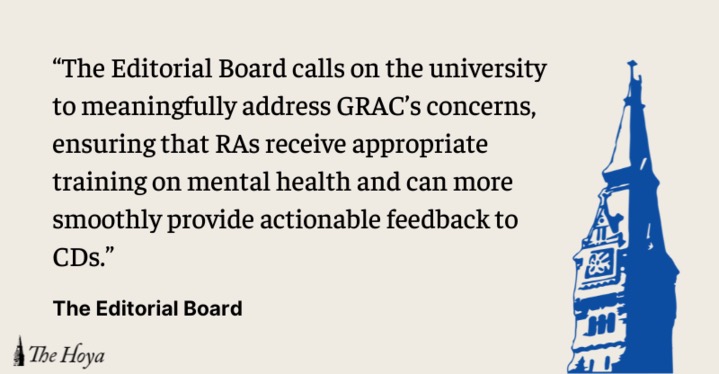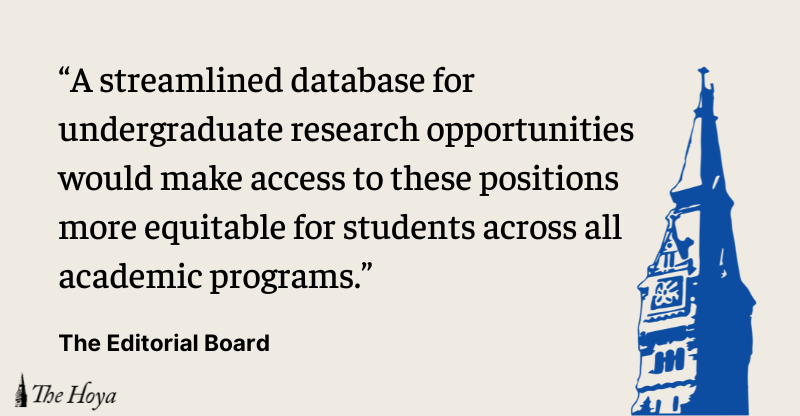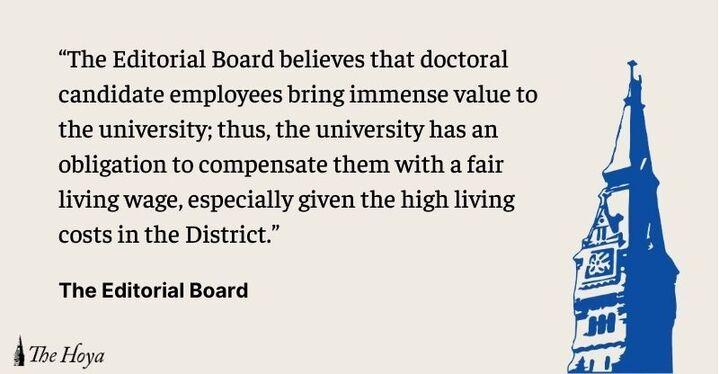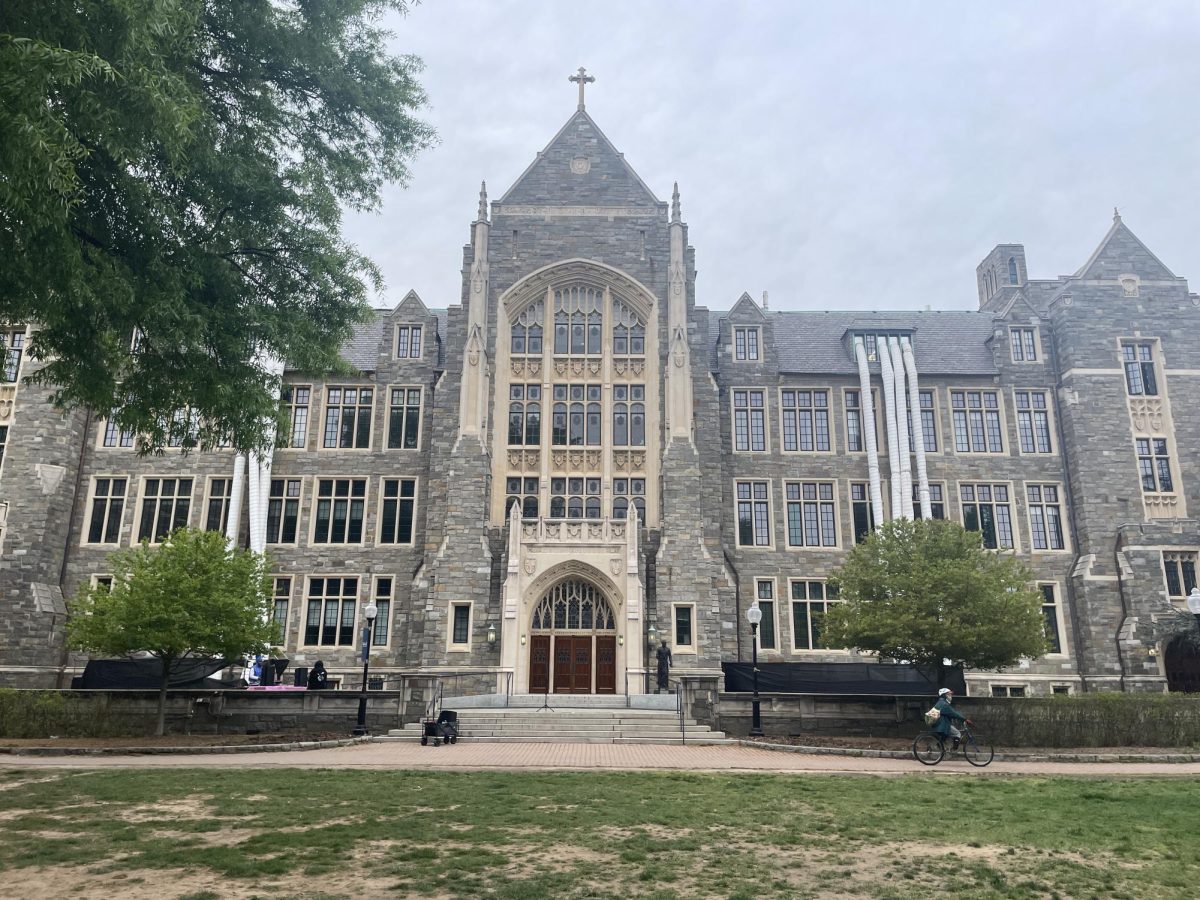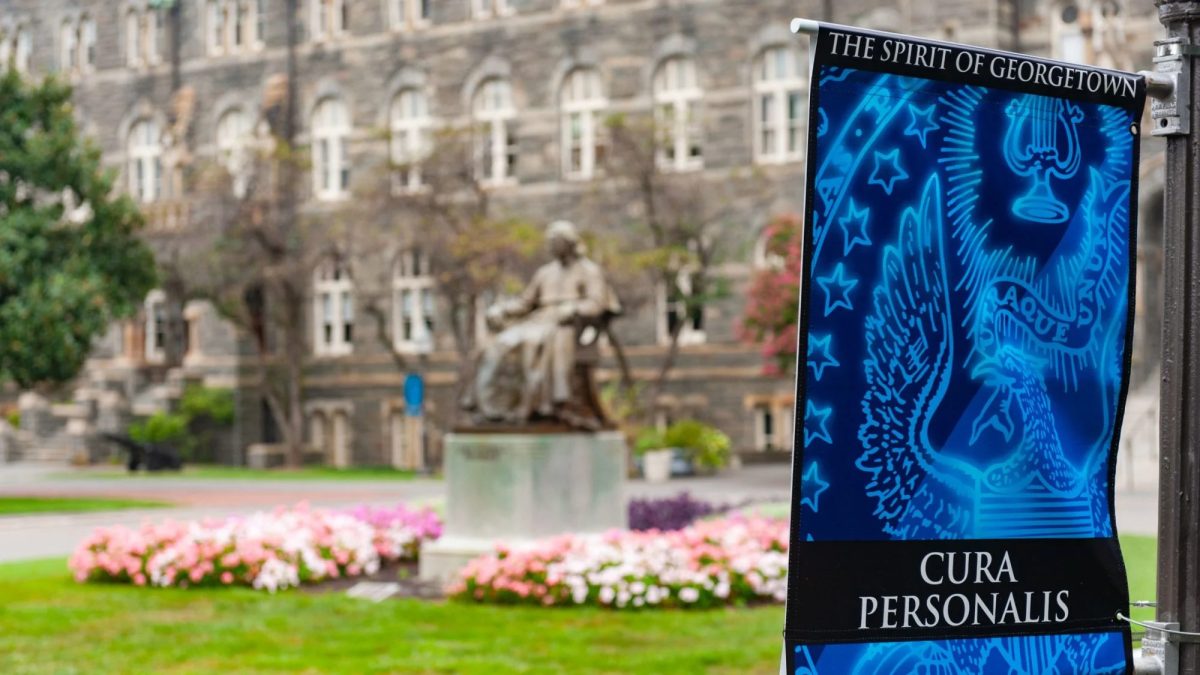For the first time in 10 months, the stacks outside the Intercultural Center, in Lauinger Library and in the Leavey Center are filled each morning with daily copies of The New York Times, The Washington Post and USA Today.
In one of their first initiatives since the election, the new Georgetown University Student Association executive has reinstated the Collegiate Readership Program. Yet while the speed with which Mike Meaney and Greg Laverriere delivered on that campaign promise is impressive, restoring the program was probably not worth the $12,500 GUSA is spending on it.
The on-again, off-again program was discontinued indefinitely last August after InterHall and the other campus groups asked to help foot the bill were unable to acquire enough funding to sustain it. This February, however, three of the four GUSA executive tickets vowed to reinstate the program as part of their campaign platforms. Their focus on the project was likely motivated by the lively vocal support the readership program had received since being cancelled.
But statistics InterHall acquired during the spring 2010 semester suggest that student interest in the program has waned. According to InterHall’s data, the readership stands were seldom empty by day’s end. Students and faculty picked up an average of only 37 percent of the available copies of USA Today, 72 percent of the copies of the Washington Post and 81 percent of the copies of the New York Times. Those numbers were lower than the statistics from previous years.
And there hasn’t been much of an indication that students want the papers easily accessible. When InterHall conducted a general survey this past October, only 14 percent of those questioned said that they were “definitely interested” in seeing the readership program return. Another 33 percent said they were “probably interested,” while 52 percent said that they were either “probably not interested” or “definitely not interested.” While the reinstatement will not hurt GUSA’s finances — it will receive credit back for papers not picked up this semester — the numbers suggest that much of the student body is simply not interested in the program.
The fact is, students’ news consumption habits are changing. Like most of the general population, students are increasingly turning to the Internet for their daily news fix. While some may say they appreciate the convenience of the papers, this sentiment will not necessarily translate into more students actually taking advantage of the program.
Connecting campus to national news sources should not be abandoned, however. A possible alternative program that might benefit students more would be providing access to online subscriptions, similar to the journal subscriptions that Lauinger Library provides. News sites are increasingly requiring subscriptions to stay afloat, thereby limiting student access to online news. The New York Times announced Thursday that it will limit online access beginning March 28, while The Wall Street Journal has long been subscription-only. Providing online subscriptions would admittedly be an expensive alternative, but to continue paying for a program that has increasingly lost students’ interest is not any more reasonable.
The readership program has always been and will always be a great addition to student life on campus, and GUSA has shown commitment in taking the lead to bring it back to students as quickly as it has. But as students change how they access their news, GUSA will have to learn to adjust to their needs as well.
To send a letter to the editor on a recent campus issue or Hoya story or a viewpoint on any topic, contact [email protected]. Letters should not exceed 300 words, and viewpoints should be between 600 to 800 words.




